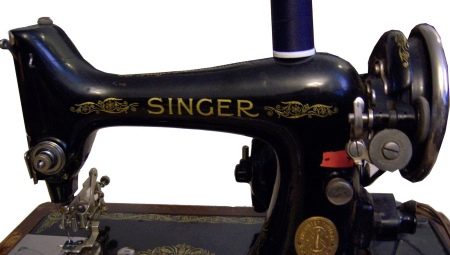Singer brand sewing machines are perfect for beginners, as they are easy to operate. This applies to both new and old models. A distinctive feature of this brand is in the automatic yarn guide. We will tell you how to thread the Singer sewing machine correctly.
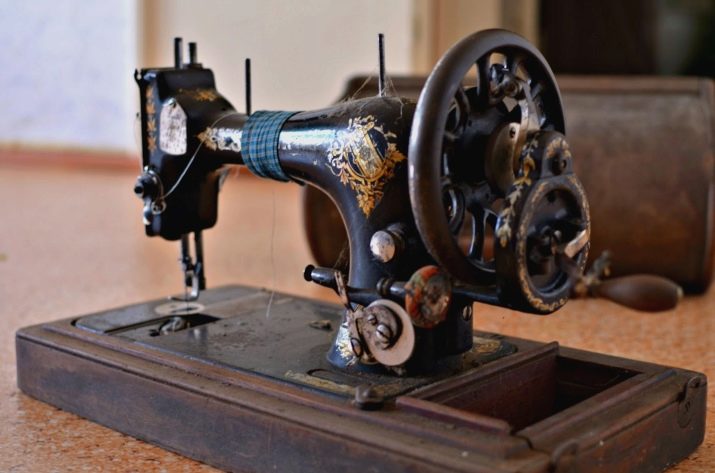
General instruction
The line is an interweaving of two threads - upper and lower. Therefore, both should be correctly filled, since each of them affects the quality of the seam. Most modern sewing machines have a diagram on the body that tells you how to thread the thread correctly. Old-style cars are more complicated, they may differ slightly. If the machine is electric, then thread the thread only at the switched off device in order to avoid injuries to hands and fingers, in case the machine starts scribbling.
First, a thread is wound around the bobbin from the main spool. Many models have a special device that helps to do this automatically. To the left of the coil is a thread guide. Then, the thread rotates clockwise around the bobbin winder in front of the holder. Next, you need to thread the thread through the hole in the spool itself from the inside out. If there are holes on both sides, you can stretch the thread through.
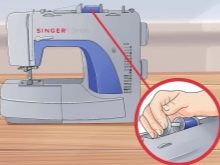
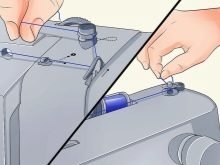

On the right side of the case is a mechanism for reel winding. It is worth placing the spool on it, be sure to fix it. The free end of the thread should stick out from the top of the spool. To turn on the winding mode, you must take the coil to the right. Next, press the pedal and hold the tail for the first winding of the threads. If everything is done correctly, the thread will begin to be wound, while the flywheel remains without movement.The needle should not sew. As soon as the required amount of thread is wound, the winding will turn off automatically.
Then you need to cut the thread and remove the spool. To do this, the mechanism moves to the left. Until he returns to his original position, the machine will not start sewing. The protruding free end of the thread should be cut so as not to interfere.
Now you can start pulling the upper thread. To do this, the machine turns off to avoid injuries to hands and fingers. Turning the handwheel manually toward you, raise the needle up, and then the presser foot.

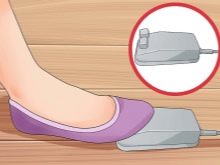
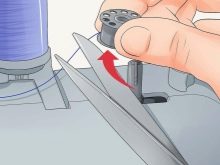
The coil is mounted on a special holder and secured with a cap. If the coil is large, then the wider side of the cap should be directed at it, and vice versa. To the left of the spool there are clamps through which it is necessary to stretch the thread, the second of them is a pre-tension spring. You can stretch the thread through the modular compartment, and then up through the thread guide. After that, the thread is pulled through the lower thread guide. Thread the thread into the sewing needle in the direction from front to back, stretching it for about 10-15 cm.
Some Singer cars are equipped with an automatic fueling device. You can use it to thread the needle. To do this, click on it so that it drops as low as possible. It is worth circling the thread around the hook to the left of the needle. Holding the thread in front of the needle, circle the second small hook on the right side from the bottom up.
Next, you need to return the device lever to its original position. This will start the process of threading the thread into the needle. It turns out a turn, for which it is necessary to pull the thread.
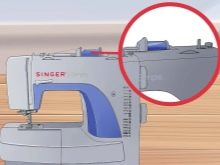
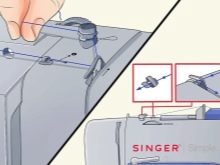

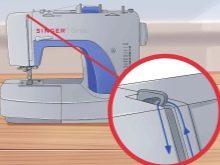
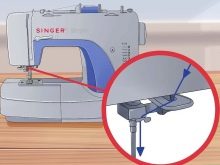
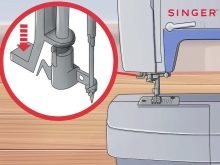
Now you need to insert the bobbin. To do this, the cover is removed and the bobbin case is removed, just pull on the tip. Insert the spool into the cap so that the thread is clockwise. The tail of the thread should be led through the slot to the end, the tip should stick out at least 10 cm. Insert the shuttle back into the nest. If the bobbin is horizontal, then the cap is not provided.
Close the cover. Now the bottom thread is pulled up. To do this, the flywheel must complete a revolution so that the needle drops and rises. The upper thread will stretch the loop, for which you need to gently pull. Both threads go under the foot.

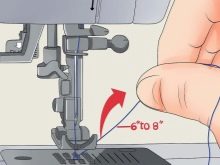
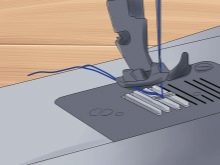
Process differences for old and new cars
Older Singer models have manual or foot controls. The latter are more bulky. They are heavy, but reliable, independent of electricity and capable of performing the entire minimum set of functions, moreover, thick fabrics or several layers are perfectly stitched. The American Singer and the Soviet have no special differences.
In general, threading on old models is not much different from modern ones. Unless everyone has a tensioner, as a result of which the thread is passed through the thread guide, and then through the eye of the needle. The first step is to choose a needle that matches the type of fabric and wind the thread around the bobbin. When the thread is threaded, it will become harder to wind on a bobbin. It is recommended to use a single coil so that there is no discrepancy in color and thickness.
Manually wound the thread for a long time and unevenly. You can use the technique of experienced seamstresses. The reel is put on a needle or thin wand, which you will need to hold.
Then the bobbin comes close to the flywheel. During its operation, the bobbin also begins to rotate and winds the thread. This method requires some skill, since the reel easily flies off the needle.
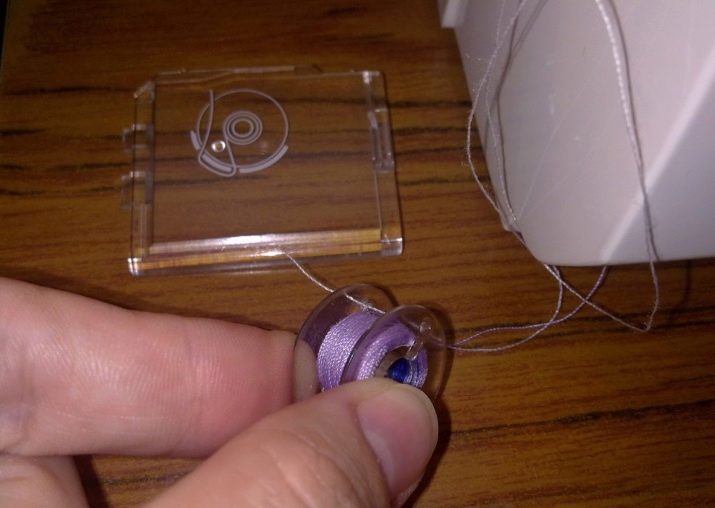
The second step is to thread the upper thread. The spool is mounted on the rod, and the yarn guide is driven to its highest position. The thread is pulled through a recess on the front board on the left, then between the washers (plates) of the tension regulator.
If the thread passes tight between the washers, then they can be tightened, otherwise the thread will break. Then it can be pulled up through the hook of the thread-absorbing spring, if any.Again, the thread is pulled up and through the eye of the thread tensioner, lowered down through the hooks of the thread guides or hooked over the needle, depending on the model and finally threaded into the needle.
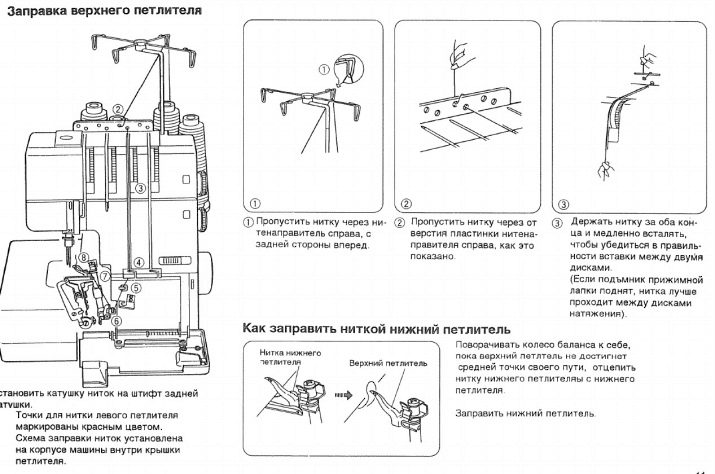
Next, insert the spool into the shuttle. On modern Singer sewing machines, it often has a convenient horizontal arrangement. On older models, the shuttle has a vertical arrangement. The bobbin is inserted using a special cap, through the slot of which the thread is pulled. Ideally leave a ponytail about 10 cm.
The needle must be in a raised state. Now it’s worth putting the bobbin in the cap into the slot. The mounting finger should align with the cutout on the plate. If there was a click, then it fell into place, otherwise you need to remove it and carefully reinsert it. Holding the upper thread, you can rotate the handwheel toward yourself one full revolution. A loop appears on the upper thread, beyond which the lower thread is pulled. 2 threads should extend behind the foot.
In older models, bullet-shaped bobbins are also found. The thread is evenly wound on it from left to right, then the pointed end of the spool is inserted into the bullet. The tip of the thread must be pulled through the slot until it stops, around a sharp corner, drawn through the spring and pulled up the bullet until it clicks. If the bobbin is in the form of a boat, then there are holes that are responsible for the tension of the thread. The more threads pass through more holes, the stronger the tension will be. The principle of winding and pulling the thread - like a bullet.
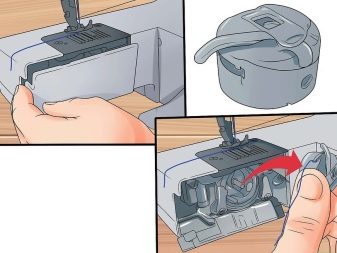
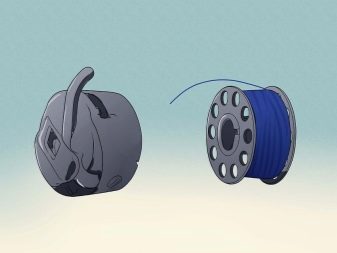
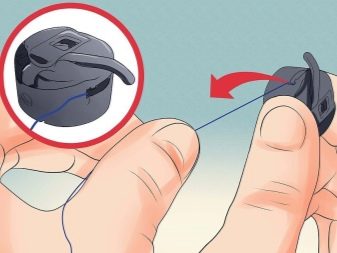

Checking for correct refueling
Now you need to check the correct threading. To do this, you need to take a small piece or flap of fabric, fold it in half and sew. The seam should be even. Then you can try to flash more layers, for example, fold the flap again.
The fabric should not be gathered, the stitch should not be interrupted or skipped. Otherwise, this may indicate a breakdown of the machine or the need to adjust the tension. You can also change the stitch pitch. Incorrect dressing leads to the pull-out stitch, which can ruin the appearance of the fabric.
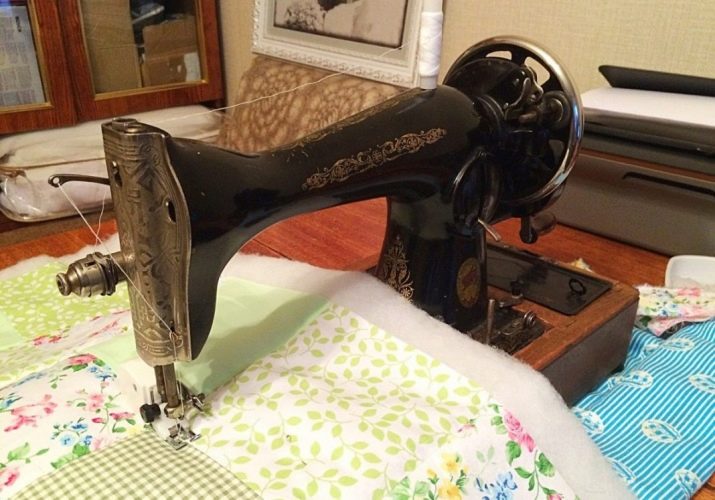
Possible mistakes
If the line starts to loop, rings form, then the thread is threaded incorrectly. There is no tension or it is very weak. You must check that the thread guide is working properly. Also, the reasons for poor stitching may be improper needle installation or tissue mismatch. If the needle does not enter the shuttle, a loop will not form. Here you need to lower the needle.
The seam can be looped due to a malfunction of the spring responsible for the tension. To check, you need to raise the foot and pull the thread. Then lower the foot and pull again. You need to do this several times. If tension does not occur, then the tensioner spring does not work well. Too much tension is also bad. If the fabric is collected, it’s the shuttle, you need to debug the tension and there or just reduce the pitch of the stitch. Thin tissue is more likely to encounter this problem.
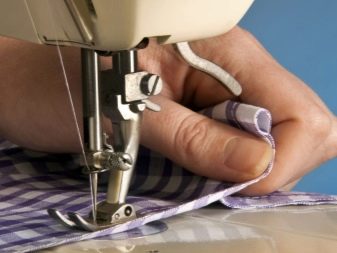
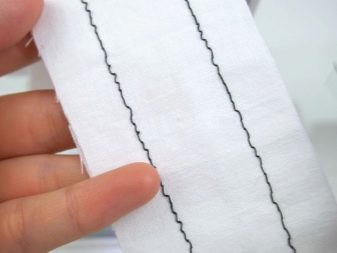
If threads of different colors are used, then they must be the same thickness or the bottom is slightly thinner, but not vice versa. Otherwise, there will be problems with the stitch. A damaged bobbin or hook can also impede the free flow of threads. Only the repairman will help here.
In general, Singer brand sewing machines have proven their quality and ease of maintenance with time. Most antique models are in working condition for many years or continue to work after repair. Modern models are easy to manage, and even threading does not cause much difficulty.
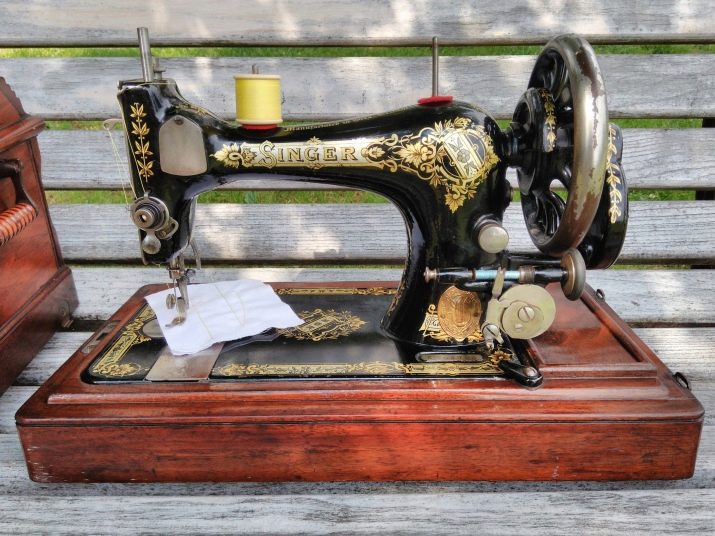
Sewing and thread winding of the Singer 7105 sewing machine is presented below.
